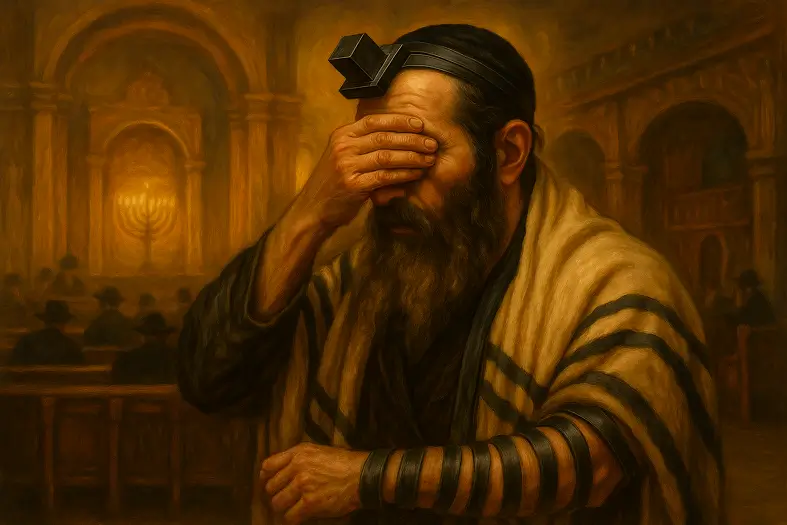


We are commanded to recite the Shema each morning and evening, affirming Hashem’s unity, the love of relationship with Hashem, and our covenantal obligations.
The mitzvah of Kriat Shema obligates every Jew to verbally affirm Hashem’s oneness twice daily, morning and night. Rambam (Hilchot Kriat Shema 1:1–2) establishes this as a Torah command, with the precise times derived from halachic tradition: in the evening until the end of the first watch, and in the morning until the third hour of the day. The Shema consists of three sections (Deut. 6:4–9; Deut. 11:13–21; Num. 15:37–41), which together proclaim faith, acceptance of mitzvot, and remembrance of the Exodus. Sefer HaChinuch (Mitzvah 420) explains that its purpose is to embed the fundamentals of emunah — unity of Hashem, love, and service — into daily consciousness. Talmud (Berachot 13b–14a) affirms that Shema is the hallmark of Jewish identity, declaring Hashem’s kingship morning and evening. Midrash Sifrei (Va’etchanan 31) teaches that one who accepts the yoke of Heaven in Shema is as though he fulfilled the entire Torah. Ramban emphasizes that Shema is not merely recitation but must be said with full kavannah (intention), particularly the first verse, which embodies the foundation of Jewish faith: “Hashem Echad.”
Commentary & Classical Explanation
Contrast with Prayer (Mitzvah 77)
Parallel to Tefillin and Mezuzah (Mitzvot 78–80)
Daily Identity Marker
Spiritual Mindfulness
Jewish Resilience in Crisis
Parenting & Education
Digital Age Discipline
National Unity
High Holiday Connection


Represents Emunah—the deep, inner trust in Hashem’s presence, oneness, and constant involvement in our lives. This badge symbolizes a heartfelt connection to G-d, rooted in belief even when we cannot see. It is the emotional and spiritual core of many mitzvot.
Denotes the oneness and indivisibility of G‑d—affirming there is no other power or force besides Him.
Mitzvot that define and deepen the relationship between a person and their Creator. These include commandments involving belief, prayer, Shabbat, festivals, sacrifices, and personal holiness — expressions of devotion rooted in divine connection.
Signifies awe and reverence toward Hashem—living with awareness of His greatness and presence.
Reflects mitzvot rooted in love—of G‑d, others, and the world we are entrusted to uplift.
Focuses on the daily act of prayer and connection to Hashem through words, kavana, and structure.
Represents the concept of spiritual intentionality, purity, and sanctity—set apart for a higher purpose.
Represents sanctifying G‑d’s Name—even to the point of self-sacrifice when necessary.
Mitzvot that strengthen communal life — showing up, participating, supporting, and belonging. Community is where holiness is shared, prayers are multiplied, and responsibility becomes collective.

Dive into mitzvot, prayer, and Torah study—each section curated to help you learn, reflect, and live with intention. New insights are added regularly, creating an evolving space for spiritual growth.

Explore the 613 mitzvot and uncover the meaning behind each one. Discover practical ways to integrate them into your daily life with insights, sources, and guided reflection.

Learn the structure, depth, and spiritual intent behind Jewish prayer. Dive into morning blessings, Shema, Amidah, and more—with tools to enrich your daily connection.

Each week’s parsha offers timeless wisdom and modern relevance. Explore summaries, key themes, and mitzvah connections to deepen your understanding of the Torah cycle.